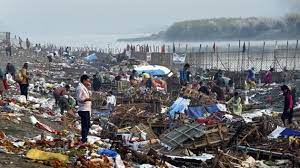Pollution In Rivers : Report By Central Pollution Control Board

A recent report from the (CPCB) said that the number of polluted stretches in India’s rivers has fallen from 351 in 2018 to 311 in 2022 though the number of most polluted stretches is practically unchanged.
- The CPCB network monitors water quality at 4,484 locations in 28 States and seven Union Territories including rivers, lakes, creeks, drains and canals.
- The number of polluted river stretches categorised in ‘Priority 1 to 5.
- Priority 1:River stretches with a BOD exceeding 30 mg/L are considered the most polluted and thus need the most urgent remediation.
- Priority 2: Indicating a BOD of 20-30 mg/L.
- Priority 3: BOD between 10-20 mg/l
- Priority 4: BOD between 6-10 mg/l.
- Priority 5: Indicating 3-6 mg/L.
- While Gujarat and Uttar Pradesh had the maximum number of ‘Priority 1’ river stretches (6), Maharashtra had the maximum number of polluted river stretches i.e. 55, followed by Madhya Pradesh (19), Bihar (18), Kerala (18), Karnataka (17) and Uttar Pradesh (17).
Biological Oxygen Demand (BOD):
- BOD is defined as the amount of dissolved oxygen needed by bacteria in decomposing the organic wastes present in water.
- The higher value of BOD indicates low dissolved oxygen content of water.
Central Pollution Control Board (CPCB):
- The Central Pollution Control Board (CPCB) of India is a statutory organisation under the Ministry of Environment, Forest and Climate Change.
- It was established in 1974 under the Water (Prevention and Control of Pollution) Act, 1974.




